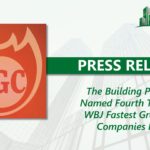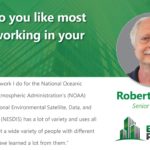The Office of Management and Budget recently issued Memo 23-15, which details how agencies should consider organizational health and performance when creating policies to address new work environments. Tom Temin of Federal News Network wrote a response to this memo, asserting that while it aims to balance the pressure to return to the office and telework, it takes a complex approach to solving this challenge.
There is no one-size-fits-all approach to determining what the best future of work strategy should be. Leaders must consider people-centric solutions to accommodate the uniqueness of each organization’s needs for its workplace strategy to succeed.
Diagnosing the health and status of an agency’s workforce and workplace starts with understanding the complete story of work as it is today as the baseline of evidence needed when making decisions about work environments. Leaders must consider things like:
- How are employees prioritizing their work activities?
- How much time is spent on those activities, and what level of importance is assigned to them from their POV? Where do employees think they perform their best work?
- How are different teams and departments communicating, and what level of interaction are they currently having today? (i.e., virtual or face-to-face?)
- Are employees’ sentiments being considered, and how do those sentiments impact organizational effectiveness and mission delivery?
- Can you objectively measure culture, and is it genuinely aligned with the agency’s mission?
What if we could create work environments that enable everyone to do their best? It would support a person’s natural work style aligned with their job, healthy team dynamics and inclusivity, and consider the organization’s overall strategy.
In addition to understanding the workforce and engagement metrics, one of the more daunting aspects of the new work environment is understanding space requirements to include space planning and design that aligns with organizational missions and various macroeconomic or regional concerns.
Leveraging behavioral science and data must be the foundation of objective evidence to be considered when making decisions about work environments, including customizing policies, talent strategies, and space planning for today and the foreseeable future. Future work environment strategies must balance operational cost efficiency, connectivity, collaboration, portfolio optimization and rent costs, workforce engagement, and mission execution.
The Building People’s future of work methodology takes all of this into account and delivers a people-centric solution that:
- Views people as the most important asset in an organization’s real estate strategy
- Believes the work environment is designed for choice, inclusivity, and health & wellbeing
- Harmonizes the real estate strategy with an organization’s talent strategy
- Starts with truly understanding people as individuals
- Blends physical and virtual space through technology
The future of work will rely on organizational designs that are fluid. We must acknowledge that there is no silver bullet that will be best for all organizations. We’re here to help begin the conversation of how to craft your unique approach to building your future work environment, today.







